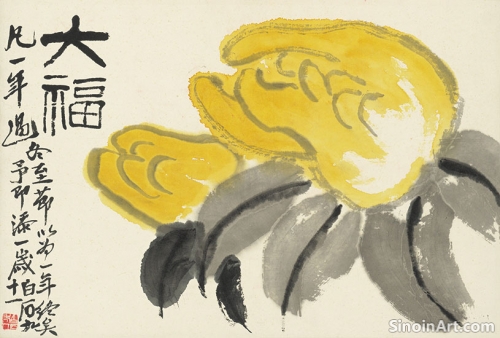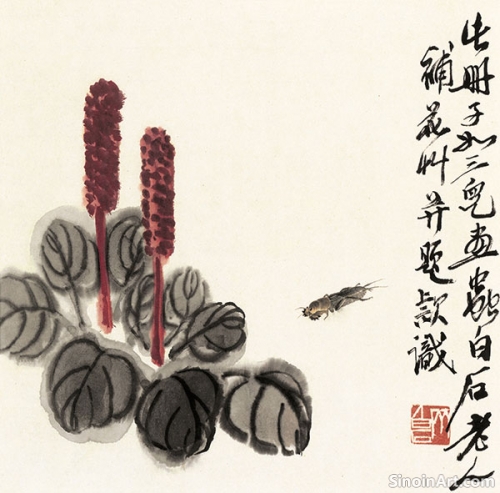The Use of "Broken Ink" in Xieyi
|
"Broken Ink" (pòmò 破墨) is a technique in Xieyi painting that involves applying multiple layers of ink on top of each other, often while the previous layers are still wet. This method allows the colors to blend and interact in a spontaneous and unpredictable way, creating rich, varied tones and textures. The layers add an element of complexity and depth.  The layers are not applied randomly; artists aim for a sense of control and intentionality, carefully considering how the different layers of ink will interact with one another. The effects created by broken ink are intended, and the result of a conscious decision. This planned layering is part of the skill of Xieyi.  The use of "broken ink" creates a sense of depth and atmosphere, making it especially effective for depicting landscapes and natural scenes. It creates a natural and organic feeling that is highly valued in Xieyi painting. It recreates the complexity and depth found in nature.  This technique also allows the artist to embrace spontaneity, the unpredictable nature of the interaction of ink and water adding a dynamic element to the artwork. There is a deliberate effort to make the most of the organic spread of ink. It is this spontaneity that is a hallmark of the Xieyi technique. The careful and intentional application of "broken ink" creates a visual richness and texture that is difficult to achieve with other methods. This gives the paintings a complexity that adds to their visual interest. It is a unique expression of the relationship between ink and water. |
Tag : Broken ink technique, Pomo, layering in art, Xieyi texture, ink wash layering
Related information
- The Significance of the Seal in Xieyi
- Famous Xieyi Artists: Masters of the Spontaneous Brush
- The History and Evolution of Xieyi
- Xieyi Painting and the Expression of Loneliness
- Xieyi Painting and the "Spirit of the Brush"
The seal (yìn) is an essential component of Xieyi painting, serving as the artist's signature, authenticating the artwork, adding to its visual composition, and often expressing personal philosophy or tracing provenance, all within the context of Chinese artistic tradition.
This article highlights the contributions of famous Xieyi artists throughout history, including Xu Wei, Bada Shanren, Qi Baishi, and Zhang Daqian, discussing their unique styles and their influence on the evolution of the art form.
Xieyi painting evolved from the Song Dynasty literati tradition through subsequent dynasties, with key figures like Xu Wei, Qi Baishi, and Pan Tianshou contributing to its development, and continuing to influence contemporary artists.
Xieyi painting powerfully expresses loneliness through suggestive compositions, vast negative space, solitary subjects, muted colors, and a sense of introspection, exploring solitude and the human condition, evoking melancholy and longing, and providing a space for contemplation and self-reflection.
"Spirit of the Brush" (bǐyì) is central to Xieyi, emphasizing the unique expressive quality and energy that emanates from the brushstrokes, reflecting the artist's inner state, personal vision, and technical mastery, with each brushstroke imbued with intention, life, and a sense of spontaneity.